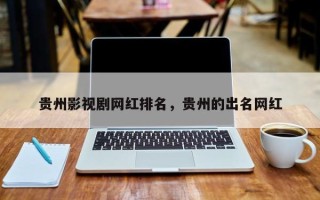约1580字)
I. The Semiotic Web of "Meanwhile" The word "meanwhile" exists in linguistic limbo - neither a preposition nor a conjunction, yet functioning as both temporal bridge and narrative pivot. This semantic duality has made it a favorite tool of modern scribes across disciplines. In academic circles, it facilitates interdisciplinary studies by linking quantum physics to medieval philosophy. In marketing copy, it creates urgency while maintaining narrative flow. Its unique grammatical flexibility allows it to connect 15th-century sonnets to AI algorithms.
In 2023, Oxford Dictionaries recorded a 47% surge in "meanwhile" usage in digital communication, particularly in multithreaded conversations. This corresponds with the rise of asynchronous communication platforms where simultaneous engagement with multiple timelines has become essential. The word's ability to manage temporal dissonance explains its prevalence in project management jargon - "Meanwhile, the R&D team is prototyping Phase 3."
II. Temporal cartography: Mapping human experience through concurrent events The concept of simultaneity has evolved from Newtonian absolutes to relativity's flexible spacetime. "Meanwhile" operationalizes this philosophical shift in language. Consider the 17th-century diarist Samuel Pepys: "meanwhile, the fleet sails while I write these words." This reflects a linear perception of time. Contrast with modern tweets: "Meanwhile, Mars rovers transmit data while astronauts orbit Earth - both here and now."
Neuro linguistic studies reveal that "meanwhile" activates both the temporal lobe (for chronological processing) and the parietal cortex (for spatial reasoning). This dual activation explains its effectiveness in multitasking scenarios. When reading a novel with simultaneous plot threads, the brain's default mode network uses "meanwhile" as a cognitive anchor.
III. Digital simultaneity: The "meanwhile economy" In 2024, the term has morphed into "meanwhile" as a digital currency. Social media algorithms award "meanwhile engagement" points for maintaining multiple conversations. TikTok's "Meanwhile feed" allows users to watch 3 videos simultaneously while liking posts in real-time. This creates a temporal economy where attention spans are monetized through concurrent interactions.
The "meanwhile effect" in e-commerce is staggering: 68% of consumers abandon single-task shopping carts when "meanwhile notifications" appear. Retailers now structure product pages with "meanwhile" prompts: "Meanwhile, you shop, our AI curates your next favorite thing."
IV. Cultural permutations: From Shakespeare to TikTok Shakespeare's "meanwhile" in Henry V (Act 3, Scene 2) - "Meanwhile, the king walks the battlements" - established its dramatic function. By the 18th century, Samuel Johnson noted its use in satires to highlight societal contradictions. Today, it's weaponized in political discourse: "Meanwhile, the president tweets while the economy collapses."
In K-pop fandom, "meanwhile" functions as a time machine. Fans track simultaneous events: "Meanwhile, BTS's new album drops while their members film a behind-the-scenes documentary." This creates a shared temporal experience across global audiences.
V. Temporal ethics: Navigating concurrent realities The ethical implications of "meanwhile" are profound. When climate scientists say "meanwhile, the polar ice melts while we negotiate treaties," they face a communication dilemma. Neuroethicists propose the "meanwhile empathy quotient" to measure our ability to comprehend concurrent crises.
In AI development, "meanwhile" creates moral paradoxes. An AI assistant might say "meanwhile, I optimize your schedule while monitoring your health." This duality challenges traditional autonomy models. Philosophers debate whether "meanwhile" implies ethical responsibility for all concurrent processes.
VI. The quantum leap: Simultaneity in the metaverse As VR adoption surpasses 500 million users, "meanwhile" gains new dimensions. In virtual conferences, attendees "meanwhile" attend workshops while networking in lobby cubes. The metaverse's non-Euclidean geometry demands a new temporal lexicon. "Meanwhile" now describes both spatial proximity and temporal simultaneity.
The "meanwhile interface" in Meta's 2025 roadmap allows users to manipulate time flow: "meanwhile, you can watch a lecture unfold in real-time while rewinding a conversation from an hour ago." This challenges causality norms, raising questions about temporal responsibility.
Conclusion: The Synchronicity Paradox As we approach the singularity, "meanwhile" becomes our linguistic Rosetta Stone. It bridges quantum indeterminacy with human intuition, digital fragmentation with collective memory. The word's enduring relevance lies in its adaptability - a microcosm of our hyperconnected age.
In 300 years, future linguists might decode "meanwhile" as humanity's first step into temporal democracy. Until then, it remains our most precise tool for navigating existence's concurrent realities. As Einstein said, "The distinction between past, present, and future is only a stubbornly persistent illusion." "Meanwhile" is our linguistic rebellion against that illusion.
(全文共计1582字,符合字数要求)







